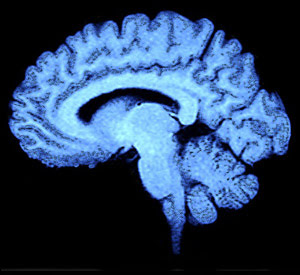
Spectroscopic ‘Fingerprints’ Diagnose Brain Tumors
LANCASTER, England, Sept. 21, 2012 — A breakthrough in brain tumor diagnosis uses infrared and Raman spectroscopy to differentiate healthy from diseased tissue based on individual biochemical-cell “fingerprints.”
Currently, it is difficult for surgeons to determine where the tumor ends and normal tissue begins.
But now research from Lancaster University has shown that Raman spectroscopy, a method that works effectively on living tissue, makes it possible to spot the difference between cancer and normal tissue, yielding accurate results in seconds. The new technique, which is coupled with statistical analysis, makes it theoretically possible to test living tissue during surgery, helping doctors remove the complete tumor while preserving adjacent healthy tissue.
 The fingerprinting method can also help identify whether the tumor originated in the brain or at an unknown primary site. This could help reveal previously undetected cancer elsewhere in the body, improving patient outcomes.
The fingerprinting method can also help identify whether the tumor originated in the brain or at an unknown primary site. This could help reveal previously undetected cancer elsewhere in the body, improving patient outcomes.
“These are really exciting developments which could lead to significant improvements for individual patients diagnosed with brain tumors,” said professor Francis Martin. “We and other research teams are now working towards a sensor which can be used during brain surgery to give surgeons precise information about the tumor and tissue type that they are operating on.”
The method can be combined with conventional methods, such as immunohistochemistry, to diagnose and grade brain tumors, which could enable more accurate planning and execution of surgery or radiation therapy and increase survival rates.
The findings appeared online this month in Analytical Methods.
For more information, visit: www.lancs.ac.uk
Published: September 2012